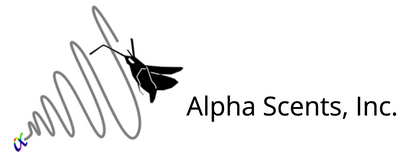Ouch! It stung me!
Since we are on the subject of wasps, let's dive in a little deeper. Did you know that there are actually 30,000 species of wasps! The most prevalent ones are of course the ones with bright colors and that we associate with stinging us during our summer barbecues and picnics. Although having a large number of species, wasps are subcategorized into social and solitary. Social wasps, accounting for roughly 1,000 species, are wasps that create colonies, for example: hornets or yellow jackets. The rest of the species are solitary. There are other differences among these categories of wasps, for example, solitary wasps use their stingers for hunting whereas social wasps use their stingers in defense.
So how are wasps different than bees?
An easy rule of thumb: wasps build nests by chewing wood fibers and spitting out a papery substance, whereas bees construct their nests from wax that they secrete. In general, wasps are much brighter in color than bees and can sting you multiple times. If you ever get close enough to a wasp, you will notice that their abdomens are pointed and they have a tiny waist line which differentiates them anatomically from bees.
When social wasps are under attack the release a pheromone that lets other wasps in the colony know to attack, making them very aggressive. And although beneficial to keeping other pests in order, they can be a huge nuisance, and can strike fear in people, especially if allergic. Normally a wasp sting will wear off within 24 hours. But for those unlucky among us who are allergic, a sting can land you in the hospital and sometimes into anaphylactic shock which can lead to death.
So how can we protect ourselves and our loved ones this summer from unnecessary fear and potential stings?
Make sure to seal holes and cracks in your foundation, walls, roofs, and eaves to prevent wasps from entering your home. Cover attic and crawl space vents with fine mesh insect screen. Wasps scavenge for meat and sweet foods and drinks in outdoor garbage and recycling bins. Clean recyclables before storing them. Keep garbage cans clean and tightly covered, or seal all food garbage in plastic bags.
In addition to these cultural controls you should place several baited traps around your backyard in a well visible and open space to draw wasps away from your porch, barbecue or play area. Try and hang traps near wasps nest if you know where they are, being careful not to disturb the nest. We recommend you use a yellow rectangular card trap baited with VESPUL coaster lure. *These traps catch pests that play NO role in pollination.
These traps are highly effective and have been proven to work better than "over the counter" traps at your local grocery or home & garden stores:


